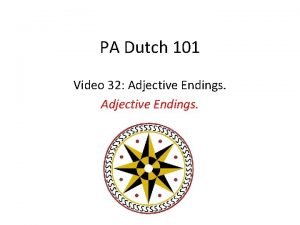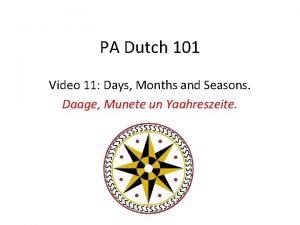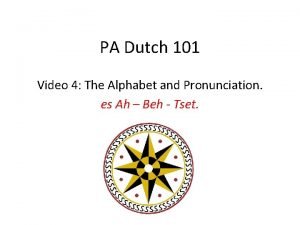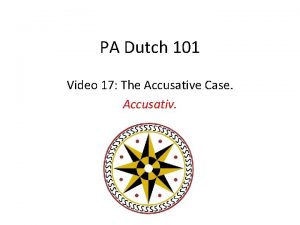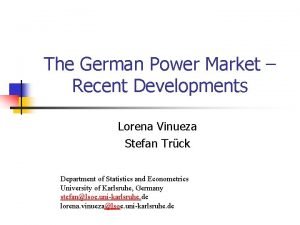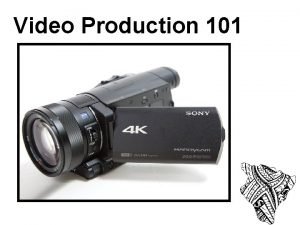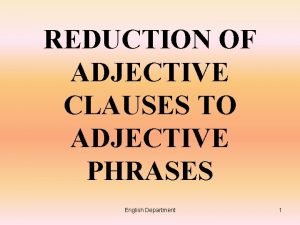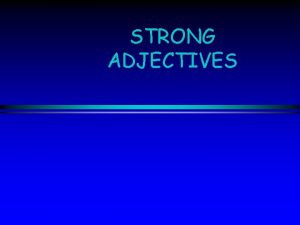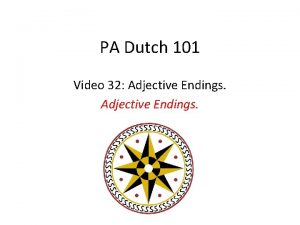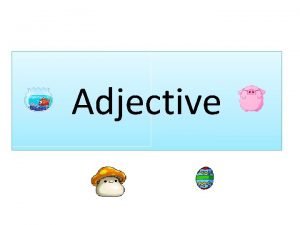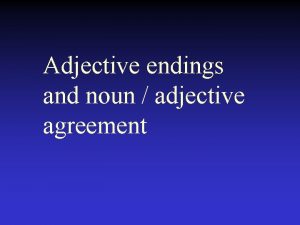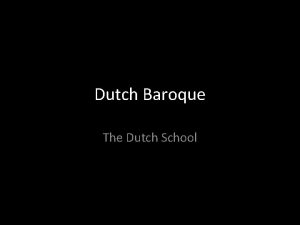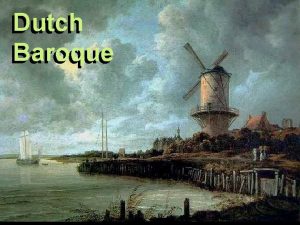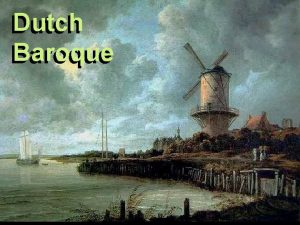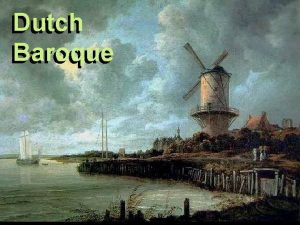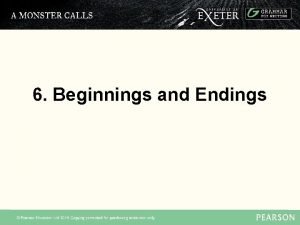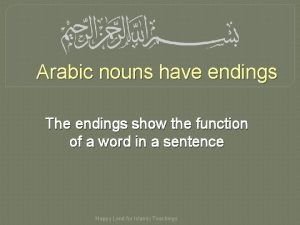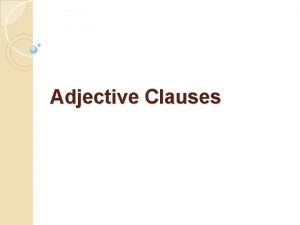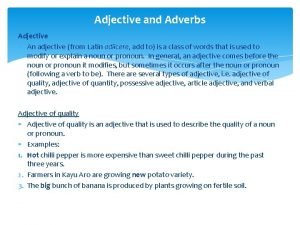PA Dutch 101 Video 32 Adjective Endings Adjective














- Slides: 14

PA Dutch 101 Video 32: Adjective Endings.

Adjective Endings • In English as in PD, adjectives are used to describe a noun. • In English, adjectives are generally used after linking verbs or immediately before nouns. • After a linking verb: • The house is big. • Before a noun: • The big house. . .

Adjective Endings • In PD, adjectives that follow linking verbs do not take an ending: • Es Haus iss gross. • However, adjectives that precede nouns take special endings. • There are three different situations that affect adjective endings.

Situation 1 – Following a Definite Article • The following endings are used when a noun is following a Definite Article (der, die) Nom. Acc. Dat. Masc. x x e Fem. x x e Neut. x x e Plural e e e

Situation 1 – Following a Definite Article • Der yung Mann schreibt der yunge Fraa en Brief. • Die gross Schul iss graad um’s Eck rum. • Es alt Buch kummt vun dem alte Mann.

Situation 2 – Following a Indefinite Article • The following endings are used when a noun is following a Indefinite Article (en) Nom. Acc. Dat. Masc. er er e Fem. i i e Neut. es es e Plural e e e

Situation 2 – Following a Indefinite Article • En yunger Mann schreibt re yunge Fraa en Brief. • En grossi Schul iss graad um’s Eck rum. • En aldes Buch kummt vun me alde Mann.

Situation 3 – Not following anything • The following endings are used when a noun is not following a Def. or Indef. Article. Nom. Acc. Dat. Masc. er er em Fem. i i er Neut. x x em Plural e e e

Situation 3 – Not following anything • Yunger Mann, wu kummscht du bei? • Dicke Kinner solle wennicher esse un meh schpiele!

Special Notes: The following rules apply to adjectives: Final B becomes a W: Der Hund iss lieb. – Der iss en liewer Hund. Final T becomes a D: Der Hund iss gut. – Der iss en guder Hund. Adjectives that end in E add an N: Die schee Fraa iss do. – En scheeni Fraa iss do. 2 or more adjectives that modify the same noun, take the same endings: • En scheeni gudi Katz schloft in re Scheier. • •

Iewing - Practice • Der ___ (alt) Schulmeeschder iss am lese. • Der alt Schulmeeschder iss am lese. • En ___ (reich) Fraa kaaft me ___ (aarm) Mann en ___ (warm) Rock (m). • En reichi Fraa kaaft me aarme Mann en warmer Rock. • ___ (gut) Kaffi (m) schmeckt mir arrig viel. • Guder Kaffi schmeckt mir arrig viel.

Some things to think about: • Adjective Endings can be very difficult at first, but don’t give up! • Try to memorize the ending charts as quickly as possible. • For each situation ask yourself these three questions: – 1. What is the Adjective following? – 2. What is the Gender of the Noun? – 3. What Case is the noun in?

Finally • Many native PD speakers do not always use the correct endings, don’t be discouraged by that. Learn the endings and use them properly!

Bis die naegschde Video, Macht’s gut un schwetzt Deitsch! E-Poscht schreiwe: busterpa@yahoo. com
 Practice german adjective endings
Practice german adjective endings Months in dutch
Months in dutch Pa dutch 101
Pa dutch 101 What is an accusative case
What is an accusative case German adjective declension
German adjective declension Unprecedented adjective endings german
Unprecedented adjective endings german Video 101
Video 101 Video production 101
Video production 101 The frame size of a video refers to the video’s
The frame size of a video refers to the video’s Yandex video
Yandex video Gravity yahoo
Gravity yahoo Yahoo search videos
Yahoo search videos Change the adjective clauses to adjective phrases
Change the adjective clauses to adjective phrases Adjectives for normal
Adjectives for normal Restrictive adjective clauses examples
Restrictive adjective clauses examples
